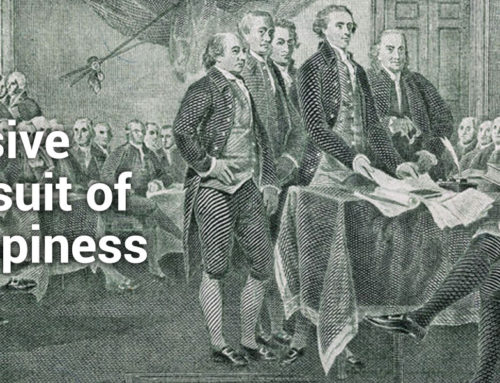Download the entire article (.pdf file) by clicking the below icon:
[icon_list icon=”acrobat” size=”large” link=”/wp-content/uploads/2014/05/STILE-Point-15-Universal-Leadership-Attributes-v.final_.pdf” target=”blank”]
[clear]
Leading each of the three phases of the Performance Trilogy® requires different attributes (i.e. talent and skills) during each phase. In Phase 1, the leadership phase, your role is to “lead from the front”, to create and promote a compelling strategy that inspires faith among your team. Leaders change things. This is the traditional view of “leadership”. In Phase 2, the management phase, your role is to “lead from the middle” to build confidence among your team with your ability to execute the strategy to produce results. Managers make things work. This is the traditional view of “management”. In Phase 3, your role is to “lead from the rear” to gain your team’s trust by empowering them, guiding them and helping them grow as leaders. Coaches make people better. This is the traditional view of “coaching”. Each of these three phases of leadership requires distinctly different attributes to ensure success. In this STILE Point, I will discuss the critical attributes of leadership. In upcoming STILE Points, I will follow with the critical attributes of management and coaching. I will then sum it all up with a discussion on the wisdom of teams in ensuring that all the critical attributes of leading, managing and coaching are present during the three phases of any initiative.
In STILE Point #2, the Three Phase Leadership Framework™ was introduced providing a comprehensive view of the actions a leader must take to ensure faith in his proposed strategy. By faith, I mean believing in something that you cannot prove. In this style point, we will discuss the critical attributes needed to ensure that the appropriate actions are taken. Only when your team has faith in your strategy and a “shared vision” of the destination can you confidently proceed to the execution phase. These critical attributes are imagination, courage, and communication
Imagination – The ability to look at what everyone else looks at, and to see what no one else sees
In STILE Point #2, leadership was defined as the art and science of creating the future by inspiring others to follow you to your desired destination, building their confidence in the path taken, and gaining their trust that you have their interest at heart. The essence of leadership is the ability to transform ideas into significant results.
The key word for purposes of this discussion is ideas. The fundamental attribute that underpins all others when it comes to developing a strategy is to have a compelling idea that will motivate you to take action. Ideas can emanate from lots of sources but clearly require a vision of a future state and a strategy on how to get there. This strategy will oftentimes require significant changes in direction: requiring new processes and different behavior (hence the often used term, change management).
Creating the future is the process of imagining what it looks like, determining why it is different than today, and developing a strategy to get you there. There have been many treatises on simulation theory, but what it boils down to is your ability to look at what everyone looks at and see what no one else sees. This requires imagination, creativity and oftentimes inspiration. There can be no doubt that this is a talent (i.e. natural born skill) that some are blessed with from birth. It is this attribute that is most often cited by the proponents of the “leaders are born and not made” theory. I don’t totally subscribe to this theory and believe that creativity, in addition to being a natural talent, is also an acquired skill that can be improved upon with practice. Sometimes ideas are inspired as a result of a life experience. My ideas are a lot better today than they were 10 years ago. While not everyone will be able to come up with brilliant ideas, most can generate good ideas that can result in a compelling vision and strategy.
Strategic thinking starts when you spend lots of time in the future. In my case, I spend a considerable time in the future, thinking a lot about how things or situations could be made better and how one would go about accomplishing them. Sometimes it’s a result of a science article I have read or a business opportunity that looks promising. I must admit, that I probably spend a little too much time in the future at the expense of the present. My family often accuses me of being the “absent minded professor” because my mind is always somewhere else when I should be present with them. My wife is helping me spend more time in the present through meditation and focusing on developing an awareness of my surroundings. God bless her.
For most however, very little time is spent in the future. This is especially true in developing countries. One of my more colorful clients was fond of saying that “planning is an exotic word in my culture”. Also, many first time supervisors and middle managers have been trained to focus on present operational issues and develop a healthy disdain for strategic planners (or “dreamers” using their vocabulary). The trick is to know which phase of the Performance Trilogy® you are in and focus on those attributes most needed at the time.
In my last STILE Point in the Self Mastery series, I pointed out the importance of increasing ones self-awareness. This is an excellent way to develop your critical thinking skills that lead to useful ideas. Force yourself into the future by asking questions. “Why is this not working? How can I improve it? What do I need to know to understand it better? Who can I discuss this with that would give me some good ideas? In their book, Creating Excellence, Hickman and Sliva point out that asking questions that others may not think of asking can lead to creative insight. Such insight forces you to move away from reliance on rules, logic, and efficiency. It enables you to get at the heart of a problem, discover hidden opportunities, and opens the door to the best strategies.
While not everyone has the talent to change the world, most of us have sufficient talent along with acquired skills to make the world a little better.
Courage – The ability to act despite considerable risks
While ideas are the lifeblood of leadership, the ability to turn those ideas into results takes courage. New ideas are threatening. As Machiavelli is most often quoted as saying “There is nothing more difficult to take in hand, more perilous to conduct, or more uncertain in its success, than to take the lead in the introduction of a new order of things”. How often have you heard reactions to ideas such as “that will never work”, “we’ve already tried that before and it failed”, and “we don’t have the experience”. As a result, most leaders are constantly faced with the fear of failure.
I’ve mentioned that I spend lots of time thinking of new ideas. Early in my career, however, I was extremely cautious and rarely acted on my ideas for fear of failure. The turning point for me was Tony Robbins’ concept of the power of taking action in his two books Unlimited Power and Awaken the Giant Within. After reading his books and listening to his tapes, my awareness of the importance of taking action was significantly increased (Be sure to read STILE Point # 13, the importance of self-awareness). It dawned on me that ideas were like potential energy. In and of themselves, they are powerful. But only when potential energy is converted to kinetic energy can any useful work get done. Likewise, only when ideas are acted upon, can leaders create change.
I also resonated with his comment that there is no such thing as failure, only results. The more I thought about it, the more I realized what a sound concept that is to overcome the fear of failure. As an experimental scientist, I never worried about a blow to my self-esteem when one of my experiments didn’t validate my hypothesis; I just learned from it and tried a new experiment. I now treat every initiative or decision that I make in life as an experiment. I determine (not judge) its outcome and learn from it by increasing my self-awareness.
Lest I be accused of being too idealistic, I refer to courage in the Aristotelian sense “the habit of choosing the mean between the two extremes”. On one extreme is timidity or the lack of courage. When the challenge is hard and resistance is strong, courage is an essential attribute of leadership. The other extreme is foolhardiness or taking risks without first assessing the consequences. Courage in the Aristotelian sense is taking calculated risks, which is the basis for this STILE Point series on “are you ready to lead?”
Communication – The ability to persuade others to join you
When soliciting venture capital financing for a new company we were spinning out of Arthur D. Little, my awareness was greatly increased of the power of persuasive communication. We spent a considerable amount of time preparing for these “dog and pony shows” by sharpening our message about the value of our technology and the robustness of our business plan. We were enlightened by one reviewer who told us, “Look, ideas are a dime a dozen and most of them are pretty good; we make investment decisions based on people not ideas. You have five more minutes to convince me that I should invest in YOU!” The lesson we learned that day can be summed up in one of Steven Covey’s seven habits of successful people, “seek to understand, before seeking to be understood”.
In STILE Point #3, we discussed the importance of inspiring other to have faith in your ideas. To successfully persuade others to have faith in your ideas, you must have a strategy that is desirable, achievable, and beneficial in their eyes. People do things for their reasons, not yours. Hickman and Sliva in Creating Excellence point out that people are not all the same, and they’re certainly not the same as you. To persuade someone to adopt your ideas, you must look inside each individual to gain knowledge of that person’s expectations and needs in order to understand how best to convey your message. I am reminded of a colleague who complained that “our Sector leader claims to have communicated his new strategy to us but all I got was a memo!” Leaders that communicate well understand the four steps of the transmission and reception process.
The four steps are:
- Meaning – What is it that I want to say? Is it clear and unambiguous? Do I mean it?
- Speaking – How am I translating what I mean in both words and body language?
- Reception – What did the other person hear me say? How might he/she have filtered it based on his or her current awareness?
- Understanding – How did the other person interpret what he heard?
How often have you overheard the following reactions to conversations? “Didn’t you just hear what I just said”! That’s not what I meant”! What are you talking about”! These miscommunications arise when you focus only on transmission and pay little attention to reception. I repeat Covey’s quote “seek to understand before seeking to be understood”. This is best accomplished by a technique that most of us know but rarely practice called “active listening”.
Listening is hard work intellectually and emotionally and is more tiring than talking because it requires total concentration. I must admit that listening is one of my most serious weaknesses. While people are speaking to me at approximately 100 words a minute, I oftentimes hear what they say, interpret what they mean and interrupt before they even finish what their were going to say. On those occasions when I do practice active listening, my ability to communicate dramatically improves and the results I get are significantly better. It’s a work in progress for me.
Upon finishing your message (transmission), ask the person or group to whom you are speaking to tell you what they heard (reception). This is an effective way to probe not only what message they heard but also how they interpreted it in their own minds. When listening to someone speak, paraphrase what they said to provide feedback on your interpretation of their meaning. Sometimes it will take two or three iterations to achieve true communication. You know you are successfully communicating when your audience tells you “We heard what you said and understand what you meant”. This is the true meaning of the expression “meeting of the minds”.
[hr]
Dr. Tony Graffeo is the president of Graffeo & Associates, a global consulting company founded in 2007 that provides technology executives and R&D managers consulting and training on Strategic Planning, Performance Management, and Leadership Development.
Dr. Graffeo has over 35 years experience in R&D management, serving as Vice President of R&D for two internationally recognized Science, Technology, and Innovation organizations; Battelle Memorial Institute and Arthur D. Little. He was also one of the founders and Executive Vice President of Biodevelopment Laboratories, a contract R&D Company serving the pharmaceutical and biotechnology industries.



